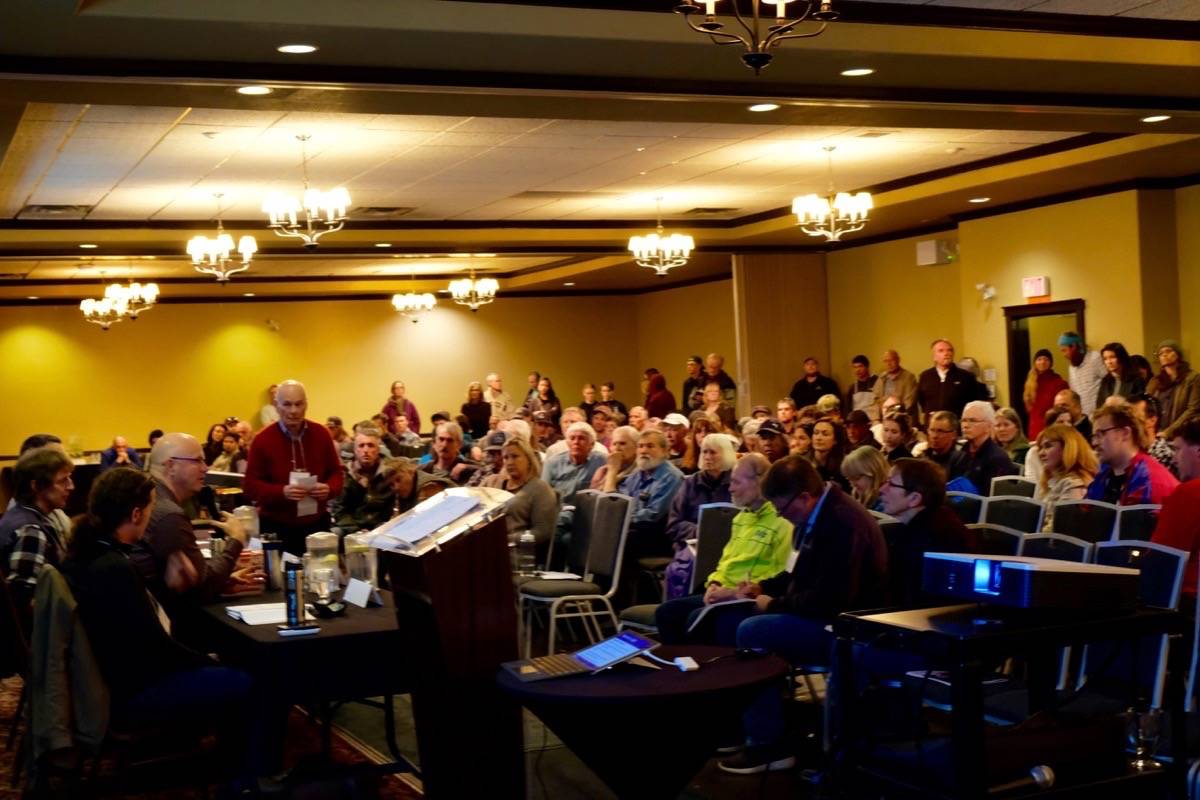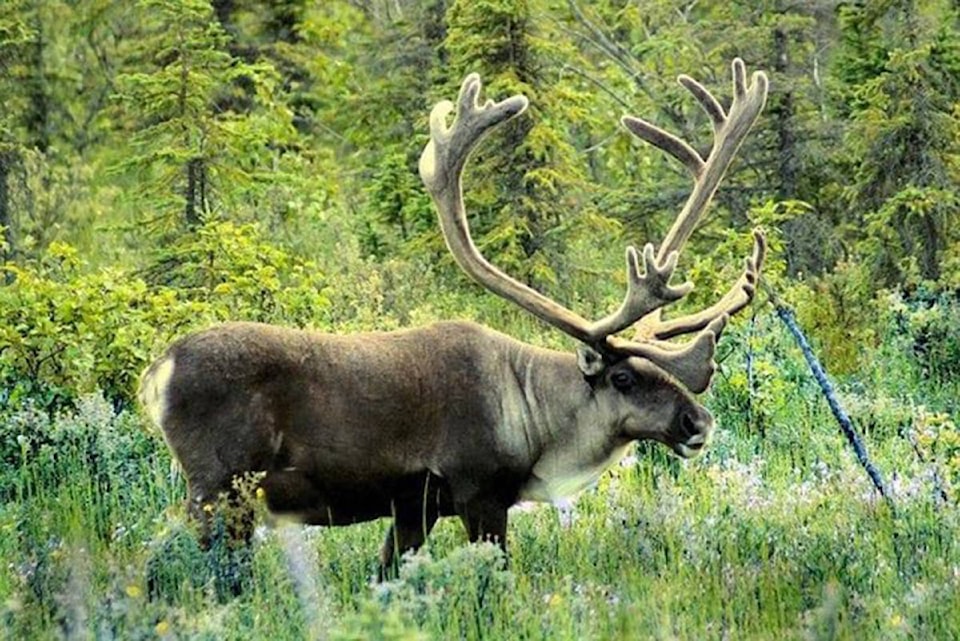The majority of a crowd of 250 at Nelson’s Prestige Resort on Tuesday evening was decidedly pro-caribou and not happy with the logging industry.
Snowmobiles and helicopter tourism were also not popular. Ecosystem health, however, won the evening.
The Nelson meeting was one stop on a tour of the province undertaken by the BC Caribou Recovery Program to ask for feedback on the new joint caribou recovery proposal, made between the province and federal government.
The agreement calls for enhanced measures in habitat protection for the southern mountain caribou as well as increased predator management, recreation management, and captive breeding.
It seeks to do what some might consider impossible: help caribou numbers recover while minimizing impacts on industries that operate in caribou habitat.
The presenting panel encouraged the public to comment on the plans at https://engage.gov.bc.ca/caribou/.
At the panel’s Revelstoke meeting on Monday, attended by an estimated 800 people, the plan took heavy criticism from people worried about the health of the logging industry and possible restrictions to backcountry access for snowmobilers and other recreationists.
But in Nelson, none of the dozens of people lined up at the mic spoke for those concerns.
The following summarizes a few questions from the public and answers provided by members of the panel, made up of Darcy Peel, Leo deGroot and Russ LaRoche of the BC Caribou Recovery Program and Blair Hammond of the federal environment ministry.
Q. Why does the forest ministry not cancel cut blocks to protect caribou?
A. Areas are already set aside for caribou, but otherwise the government does not intervene because companies have legal tenure rights. The companies employ professionals who “try to operate in a way that is complementary to caribou recovery. They are open to that discussion.”
Q. Why is BC Timber Sales (BCTS) allowed to operate in four cutblocks near Trout Lake that are immediately adjacent to prime caribou habitat, building roads that will allow more predator access? “We sit here and talk about processes, and meanwhile we watch habitat disappear.”
A. The ungulate winter range is where that legal protection for caribou resides, and outside of that, logging companies have a legal right to harvest. BCTS is including in their plans different measures to protect caribou. (The nature of the measures were not explained.)
Q. What do we have to do to get bold action on protecting whole ecosystems? There is a lot of tinkering going on with managing a few caribou, but what do citizens have to do to get real action?
A. The proposal provides a framework for doing things differently because it is the first time there has been a co-operative approach between the federal and provincial governments, along with increased funding. In the north there are significant bold actions taking place and some people think it is too bold.
Q. What we need is people management, not wildlife management or predator management. “What we need is a moratorium in that entire region that is slated for caribou recovery. Why can’t backcountry skiers and loggers step aside and let these animals be? They have no business in Sinixt backcountry.”
A. No reply.
Related:‘We’re concerned’: hundreds attend caribou meeting in Revelstoke
Q. Helicopters are the problem. “I started trapping in 1986 in the Duncan and the entire road from edge to edge was trampled with animal tracks. Now there is not a single track, so where are all the animals? You can’t blame it on the wolves. Until you shut down helicopters in caribou range you might as well pack it up and go home right now.”
A. No reply.
Q. The cumulative impacts are what is destroying life on earth. We need a wholistic plan that truly addresses the fact that you can’t clear cut log and have oil and gas and mining all these cumulative impacts and have any chance of sustaining any herd or any biodiversity. Where is the plan for cumulative impacts?
A. We are looking at a buffer zone around habitat, called matrix habitat, where caribou do not inhabit but land use practices affect them and their predators, and we are working provincially to develop practices to manage matrix habitat. It may not be enough to satisfy your concerns but we are doing what we can.
Q. Your powerpoint says you will consider habitat management “where it makes sense.” Do you mean scientific, traditional, ecological, economic or political sense? Also, how do you plan to include the Sinixt First Nation given they are not recognized by the government?
A. The program is based on science so our desire is to use the best available science to enhance caribou recovery, and also to incorporate traditional indigenous knowledge — we are working on ways to do that with Indigenous people across the province. Regarding the Sinixt, we would have to have discussions because we are not familiar with that concern.
bill.metcalfe@nelsonstar.com
Like us on Facebook and follow us on Twitter

